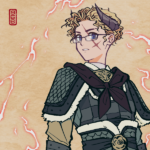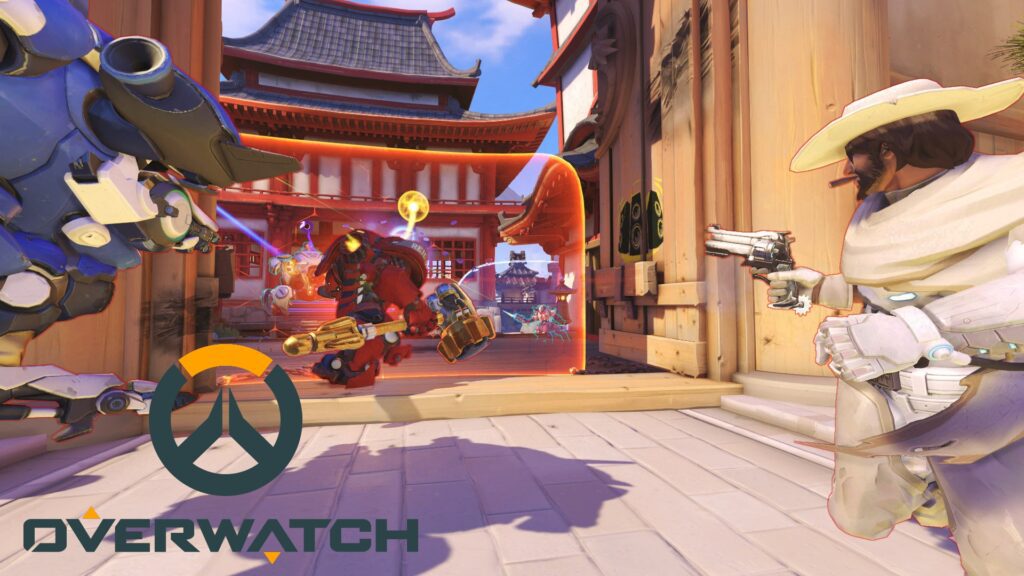
Perhaps one of the biggest multiplayer games of its time, Overwatch is a pioneer in the hero shooter genre. Two teams. Six players per team. A huge cast of memorable characters. All of this makes for a game that blends raw fun with exciting competition.
The genre of hero shooter can best be described as the melding of the MOBA with the first person shooter. The former brings with it a unique cast of characters who all have unique abilities and roles to play. The latter brings the speed and precision of other classic shooters. This combination works really well, and other games have put their own spin on the formula, turning this idea from a niche concept into a whole genre of multiplayer.
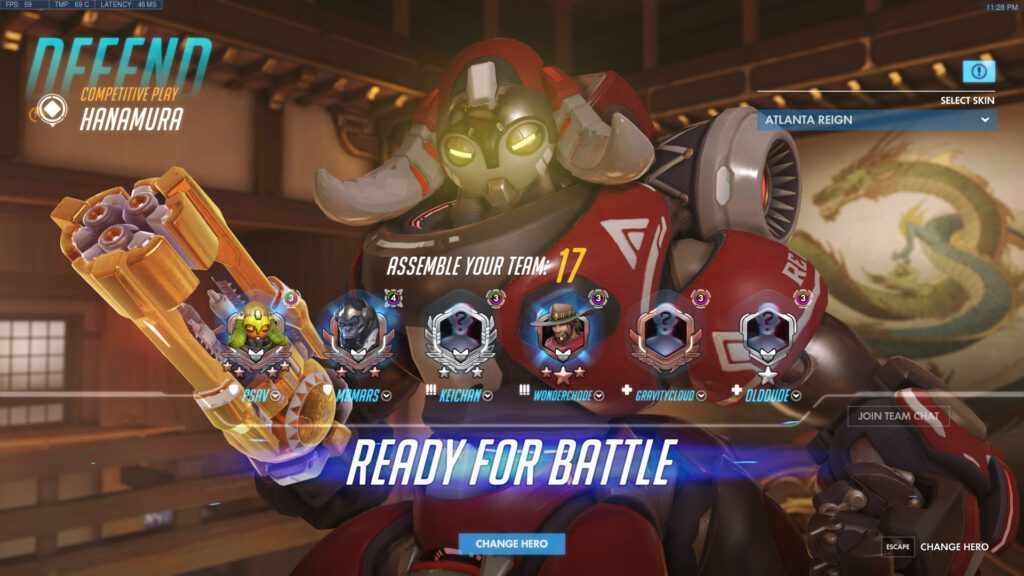
Overwatch‘s cast, at time of writing, stands at 32 heroes you can play. These heroes are spread across three roles: Damage, Tank, and Support. Damage heroes are responsible for dealing damage to enemies, tanks hold the frontline to protect their team, and supports keep everyone alive and healed. A normal match will have six players per team, with two players for each role. The character design is creative and interesting, and there’s guaranteed to be at least one hero that interests you enough to play. Some examples include the Nigerian martial artist Doomfist, a Dutch astrophysicist who goes by Sigma, and a robotic monk named Zenyatta. There are so many playstyles and personalities available to players, and you’re allowed to switch heroes mid-game, so you can adapt to counter your opponent if your strategy isn’t working. New heroes have been added steadily since launch, and plans have been announced for more hero additions in the future. Character design is pretty tame, for the most part. Some characters have revealing outfits, but most of the oversexualization in the characters is in skins and cosmetics for those characters.
The objective of each match you play will depend on the map type. There are four major gamemodes: Assault, Escort, Hybrid, and Control. In the first three, there is an attacking and defending team. Assault has the attackers capture two control points, Escort has them push a cart or payload through the map to a destination, and Hybrid is a mixture of the two. Defending teams’ only objective is to stop the attackers. Control has both teams fighting over a single point, king-of-the-hill style. The maps themselves are set in various global locations worthy of postcard covers. Fight over a train station in Busan, escort a valuable crate through Route 66, and take over a research lab on the Moon. The maps are mostly well-designed, and each one has a certain strategy that works well with the terrain.
There is one major downside to having all this content and being a multiplayer game. You won’t get the full story by just playing. There’s no campaign or single-player at time of writing, and most of the story content is found in online animations, comics, and other media. Granted, those media are well-crafted and fun to watch or read, but they’re separate from the base game. The strong point of Overwatch’s story is the character interactions in-game. Characters will talk to each other in your spawn room or while achieving an objective, and by listening to their unique interactions, you can piece together what happened and who fits where in the story.
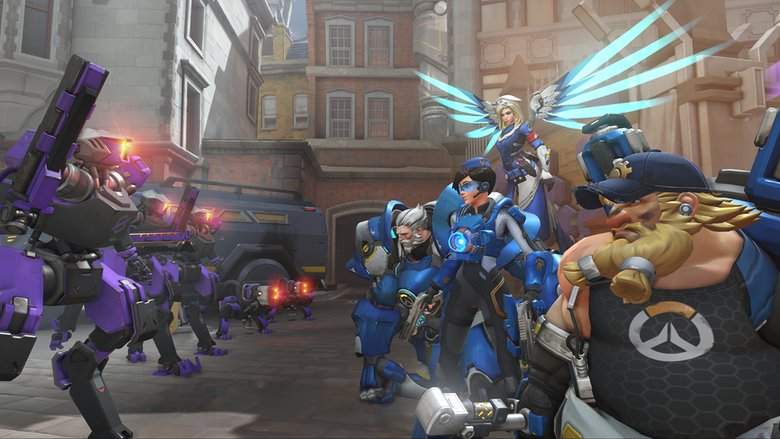
As for the story itself, it gets the job done. The characters you play as are from a hyper-technological future in the aftermath of your typical robot uprising, known in this world as the Omnic Crisis. On one side, you have the international task force of Overwatch, dedicated to peace, justice, and service. Overwatch was helping contain the Omnic Crisis until they were disbanded over a secret team known as Blackwatch carrying out covert operations and generally being shady. After Overwatch was disbanded, its members went into hiding or became vigilantes, and some even joined the terrorist group Talon that serves as one of the two main antagonist factions. The other one is another terror group made completely of robots, called Null Sector. There isn’t much more than simple context given to players, but special events in-game have provided unique gamemodes to let players experience a few key moments in the story. That may be all you need for a multiplayer-focused game, but while it’s definitely an interesting premise, it’s not explored very much, at least not in-game.
Possibly one of the greatest features of the game is the tools that have been given to the players. Apart from the standard gamemodes, players can create custom lobbies to invite their friends to and play with custom rules. Custom games can be edited with specific rules, like 10x health or low gravity. The freedom to create custom games is very expansive. The devs have even created what they’ve called the Workshop, where players can rewrite the game with some limited coding tools and make incredibly unique custom games.
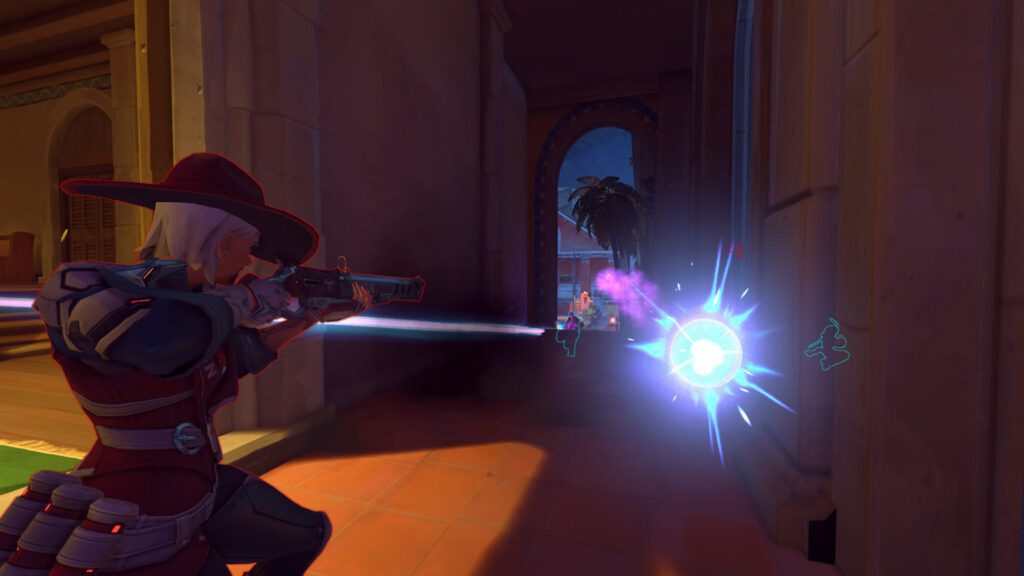
Of course, Overwatch is an online game, and that includes all the wonderful features of online play that we’d all love to erase from our memory. Yes, you’ll inevitably have interactions with toxic and rude players, and not everyone will be friendly. However, the devs have taken steps to mitigate this kind of behavior. You’re allowed to avoid another player for up to a week, there is a profanity filter, and voice chats and individual players can be muted. Of course, playing with friends is still fun, and all of this toxicity is inherent in any online multiplayer game.
I have a lot of fun playing Overwatch. I enjoy playing casually as well as competitively. I’ve had clutch plays and funny moments. There is some kind of fun to be had for anyone playing the game, and the only complaint I can have is the online nature of the game, and the interactions with other players.
Scoring: 76%
Gameplay: 4/5
Story/Setting: 3/5
Controls: 4/5
Graphics: 4/5
Replayability: 4/5
Morality/Parental Warnings
Language: Some references to foul language, but nothing said outright
Sex/nudity: Some characters and character skins sexualized via inappropriate outfits
Violence: Typical first person shooter violence, nothing too graphic – although small amounts of blood are present
Magic/Occult: Some heroes, such as Zenyatta, fight with magic and in Zenyatta’s case in particular is a monk of an imaginary religion in the Overwatch universe, who’s members believe robots have souls.
Content such as pride flags are present.
